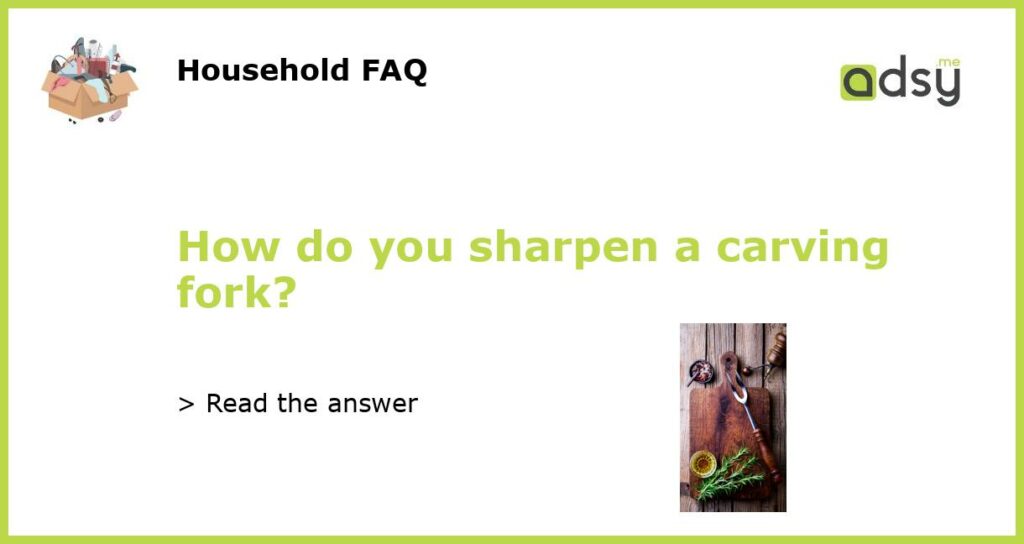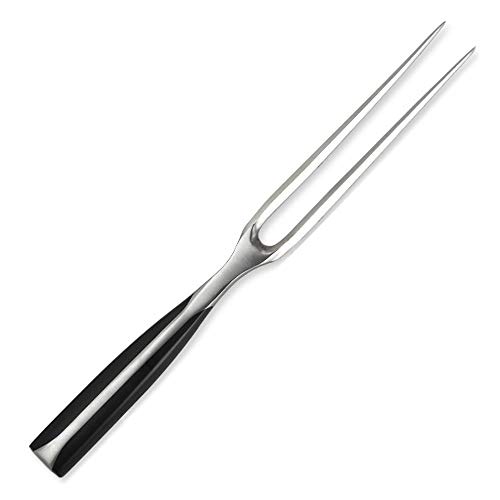Carving forks are must-have tools in any kitchen, and they come in handy when you need to carve meats or hold them steady while carving. However, like any other sharp tool, carving forks lose their sharpness over time and become less effective. Therefore, keeping them sharp is crucial in ensuring that they remain efficient and safe to use. In this post, we will explore the different ways you can sharpen a carving fork at home.
Method 1: Using a sharpening stone
One of the most effective ways of sharpening a carving fork is by using a sharpening stone. To do this, place the sharpening stone on a flat surface and add a few drops of oil or water to the stone. Next, hold the carving fork at an angle of 20 degrees and gently rub the tines against the stone until they become sharp. Ensure that you rub both sides of each tine separately to achieve a consistent sharpening effect. Finally, wipe the tines with a damp cloth to remove any debris or oil.
Method 2: Using a honing steel
Honing steels are another excellent tool for sharpening carving forks. However, unlike sharpening stones, honing steels are more effective in maintaining the sharpness of the tines rather than sharpening them. To use a honing steel, hold the carving fork at an angle of 20 degrees and gently slide each tine against the honing steel in a back-and-forth motion. Ensure that you rub both sides of each tine separately to achieve a consistent sharpening effect. Finally, wipe the tines with a damp cloth to remove any debris or oil.
Method 3: Using a sharpening tool
Sharpening tools are specialized tools that are designed specifically to sharpen knives and forks. To sharpen a carving fork using a sharpening tool, place the tool on a flat surface and slide the tines of the fork through the tool’s sharpening slot. Ensure that you follow the tool’s instructions for use, as some tools may require you to sharpen the tines at a specific angle or in a specific direction. Finally, wipe the tines with a damp cloth to remove any debris or oil.
Method 4: Using sandpaper
If you don’t have a sharpening stone, honing steel, or a sharpening tool, you can sharpen your carving fork by using sandpaper. Begin by folding a sheet of sandpaper in half and holding it in your dominant hand. Next, hold the carving fork by the handle in your other hand and rub the tines against the sandpaper in a back-and-forth motion. Ensure that you rub both sides of each tine separately to achieve a consistent sharpening effect. Repeat the process with a finer grit sandpaper until the tines become sharp. Finally, wipe the tines with a damp cloth to remove any debris or sandpaper grit.
Method 5: Getting professional sharpening services
If all else fails, you can always take your carving fork to a professional sharpening service. These services have specialized tools and equipment that can sharpen your carving fork to its optimal sharpness level. Although these services may cost you more than the other methods, they are an excellent way of ensuring that your carving fork remains sharp and safe to use.






